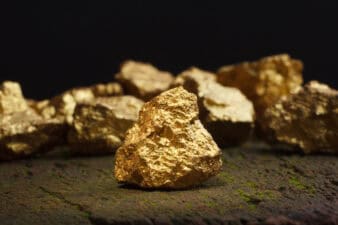Precious metal streamers and miners have fortunes that are intertwined in each other’s success. Streamers provide the upfront capital for miners to set up operations and begin extracting the metals from the mine in exchange for a percentage of the metals extracted for a significantly reduced price. Streamers can then sell those metals at the current market price, recouping more than their initial investment.
Gold is often sold to streamers for US$400 per ounce, and silver is sold for US$4.50 per ounce. By way of comparison, the current market rate for gold and silver is hovering near US$1,300 and $17, respectively.
For the miner, the discounted metals sold to the streamer provide some revenue, while the remaining metals extracted are then sold for the market price as well.
Both offer significant advantages and disadvantages, but which of the two makes a better investment?
Let’s look at both.
The case for a streamer
Streamers such as Wheaton Precious Metals Corp. (TSX:WPM)(NYSE:WPM) hold significant opportunity over traditional miners in some respects. Chief among those advantages comes down to risk.
While technology has enabled miners to better probe and determine the feasibility of potential mining location sites, the process is expensive and time consuming. Even after a mine is set up and production has begun, there’s still no guarantee that the miner will recoup the initial investment, which is largely dependent on how much and what types of metal end up being extracted.
Streamers, however, do not need to be concerned with construction and staffing costs; instead, a streamer is like an investor waiting for returns to materialize.
Another advantage that streamers have over traditional miners is that they can take an arms-length approach to operations, meaning that once the mine is financed and under construction, the streamer can move on to the next opportunity and leave the day-to-day operations to the miner, who arguably has a greater interest and investment in the mine.
The case for a miner
Traditional precious metals miners such as Barrick Gold Corp. (TSX:ABX)(NYSE:ABX) hold plenty of potential of their own, albeit at a higher risk.
Miners are extremely dependent on the current market price of precious metals, which can wildly fluctuate. In 2011, gold prices surged to near US$1,900 per ounce and then plummeted to sub-US$1,100 levels in what became several years of stagnant growth.
While waiting for market conditions to improve, many miners such as Barrick took on considerable amounts of debt to maintain operations, while taking steps to become more efficient. Miners often refer to an important metric known as all-in sustaining costs (AISC), which refers to the costs associated with producing an ounce of gold. During the years of stagnant growth following the 2011 collapse in prices, miners had AISC in some cases that were greater than US$1,100 per ounce.
In the years since that collapse, Barrick has become one of, if not the most, efficient miners on the market with AISC typically coming in sub-US$800 per ounce, which leaves a healthy margin for growth.
Which is the better investment?
Both miners and streamers offer considerable opportunities for growth, but in my opinion, the streaming model appears to be the better investment now.
The diversified portfolio of a streamer offers considerable advantages over a traditional miner that is vested into a single mine, and the ability to recoup costs not once but twice for the same ounce of metal is a compelling opportunity.







